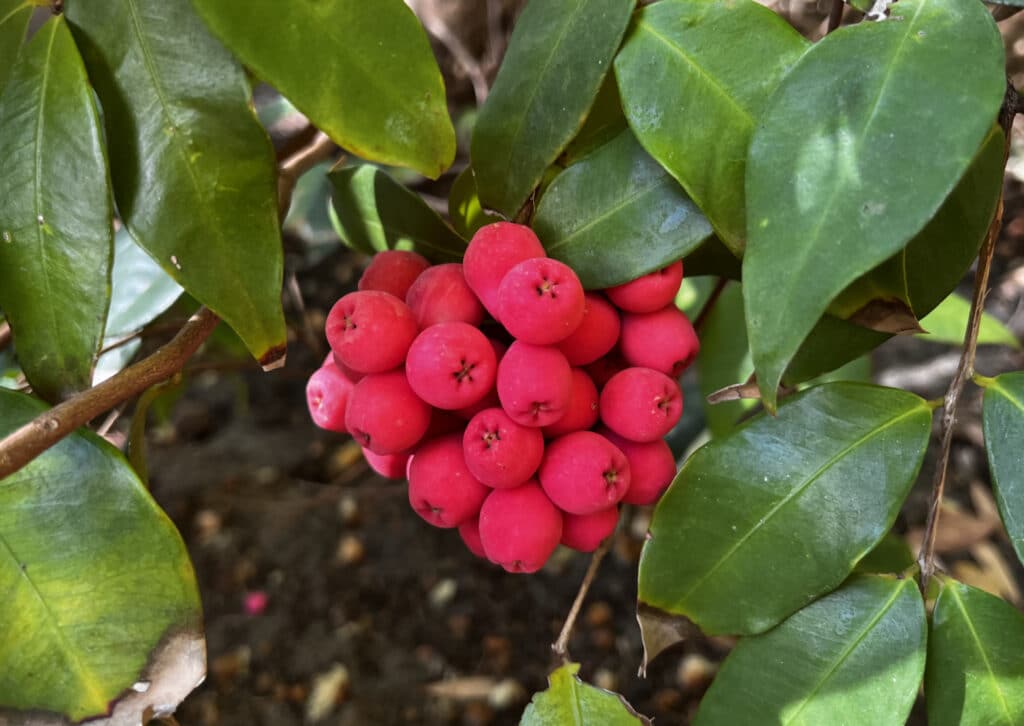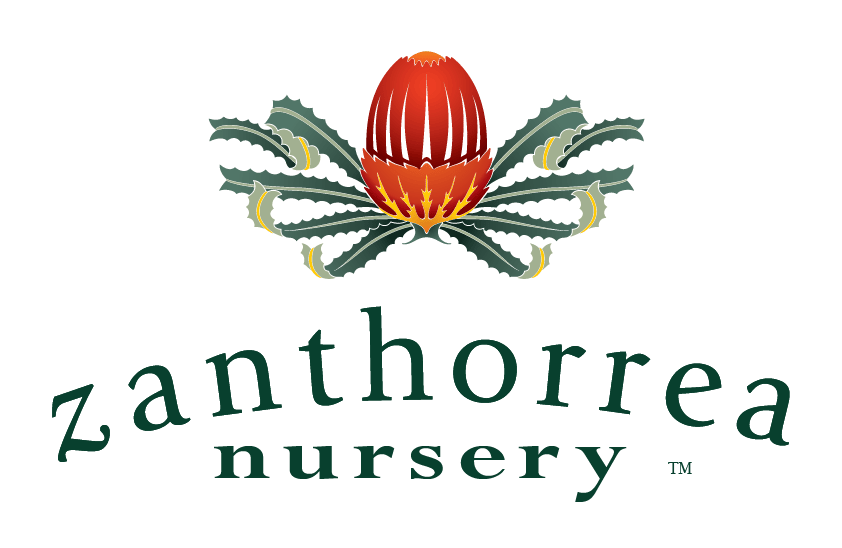Menu
Opening Hours: 9am-5:30pm, Every day except closed on Christmas Day and Boxing Day.
Opening Hours: 9am-5:30pm, Every day except closed on Christmas Day and Boxing Day.

There has been widespread interest in bush tucker plants. Further information should be sought before preparing and consuming bush tucker foods. The following bush tucker plants are sometimes available at the nursery.
Acacia acuminata (jam wattle)
A small wattle tree. Seeds are collected and ground into flour, mixed with water to make a small cake in coals of fire. Host plant for quandong and sandalwood (Caution: not all wattle seeds are edible).
Acmena smithii & Syzygium australe (lilly pilly)
A medium sized tree or large shrub which has edible bland tasting fruits. Fruit cooked in jams and jellies.
Austromyrtus dulcis (midyim)
A low growing small shrub. The tiny greyish white fruits are very soft and have an aniseed taste. They are delicious eaten raw. The wildlife love them to.
Backhousia citriodora (lemon myrtle)
This medium tree has strongly lemon flavoured leaves which are sought after by the gourmet industry. Fresh and dry leaves are used to flavour sauces, salads, chicken, fish, beverages and desserts.
Baeckea virgata (twiggy heath myrtle)
Small to medium shrub with white flowers. Leaves are used to make a refreshing tea.
Banksia attenuata & Banksia grandis
These are both small trees local to the hills area. Nectar may be sucked from the flower or soaked in water to produce a sweet drink.
Billardiera heterophylla (australian bluebell)
Formerly Sollya heterophylla. A shrubby twining climber to 1 m. The edible fruits may be eaten raw.
Correa alba (white correa)
A small shrub with greyish leaves and white flowers. The leaves are used to make tea
Dianella revoluta (spreading flax lily)
A grass-like plant. The fruit can be eaten raw. Roots are pounded and roasted on hot rocks.
(Caution: Some dianella seeds are said to be mildly toxic.)
Kennedia prostrata (running postman)
A common ground cover to the hills. The flowers have sweet nectar and can be used to make a tea. The stems are used as a twine.
Kunzea pomifera (muntries)
This small sprawling shrub is a useful ground cover with small white flowers. The edible fruits have a sweet apple flavour which may be eaten raw or cooked. They also make excellent jam and tarts.
Lepidosperma gladiatum (coastal sword sedge)
The base of the stems are eaten raw or roasted. Plants that are grown in wet areas are more succulent. Leaves can be used in making rope and string.
Leptospermum petersonii (lemon scented tea tree)
The leaves of this attractive large shrub may be infused to make a pleasant tasting tea.
Macadamia integrifolia (macadamia nut)
This is the best known of the Australian food plants. This large tree produces hard fruits which contain sweet, oily nuts.
Santalum acuminatum (quandong)
Succulent bright red fruits can be eaten raw or roasted. the fruits can be made into jams, preserves, jellies, sauces, chutneys, cordials, liquers etc,.
Tasmannia lanceolata (tasmanian mountain pepper)
A medium tree. Ground seeds may be used as a pepper substitute.
Tetragonia tetragonoides (warrigal greens/spinach)
Young shoots and leaves are edible raw or cooked. Similar in taste to spinach. Leaves are slightly bitter and best eaten lightly cooked or blanched to remove oxalates which should only be eaten in moderation.
Tilapariti tiliaceum rubrum (cottonwood)
Formerly Hibiscus tiliaceus rubrum. Small to medium tree with edible flowers. The leaves were used to wrapped around food before cooking to add flavour to the food
Viola hederacea (native violet)
A small shade loving ground cover. The flowers can be used in salads.
Denotes Western Australian Plant
The following are sometimes available in seeds. Acacia victoriae, Bush Tomato, Kennedia prostrata, Macadamia, Nuytsia floribunda, Quandong, Sandalwood, Warrigal greens/spinach.
We love your feedback, please review us on Google

“Zanthorrea Nursery has been an accredited nursery and garden centre for many years, and is active in supporting Greenlife Industry Australia and the Nursery and Garden Industry of WA”
